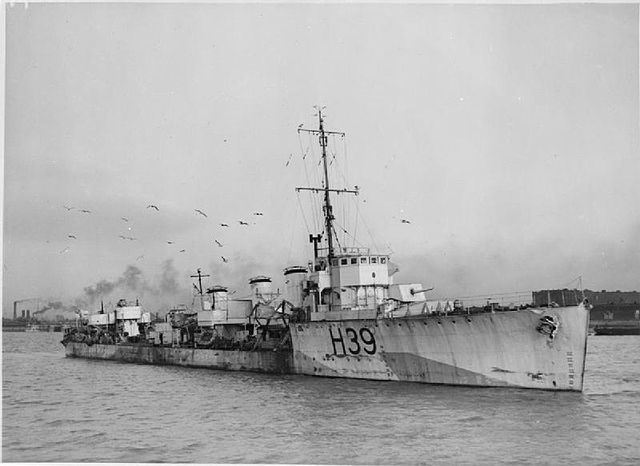An Escort Group consisted of several small warships organized and trained to operate together protecting trade convoys. Escort groups were a World War II tactical innovation in anti-submarine warfare by the Royal Navy to combat the threat of the Kriegsmarine's "wolfpack" tactics. Early escort groups often contained destroyers, sloops, naval trawlers and, later, corvettes of differing specifications lacking the ability to maneuver together as a flotilla of similar warships, but rigorously trained in anti-submarine tactics to use teamwork emphasizing the unique sensors, weapons, speed, and turning radius of each ship. The development of these 'escort groups' proved an effective means of defending shipping convoys through the Battle of the Atlantic.
HMS Skate was one of the oldest destroyers in the Royal Navy when assigned convoy protection duty for the Western Approaches Command.
HMS Keppel was a World War I flotilla leader.
Town-class destroyers received in the Destroyers for Bases Agreement were widely distributed among the escort groups.
HMS Amazon was a unique prototype.
The Kriegsmarine was the navy of Nazi Germany from 1935 to 1945. It superseded the Imperial German Navy of the German Empire (1871–1918) and the inter-war Reichsmarine (1919–1935) of the Weimar Republic. The Kriegsmarine was one of three official branches, along with the Heer and the Luftwaffe, of the Wehrmacht, the German armed forces from 1935 to 1945.
Erich Raeder, commander of the Kriegsmarine until 1943
The crew of a minesweeper in France, 1941
The battleship Tirpitz in Norway, 1944
Anti-Jewish measures ordered by the German naval commander in Liepāja, 5 July 1941








